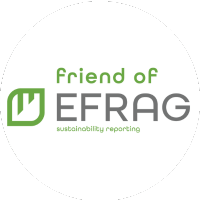To start reporting your ESG data you need to:
- Identify the range of stakeholders impacted by and impacting your company;
- Map your material sustainability issues inside and outside your business to relevant; stakeholder groups, e.g., GHG emissions, supply chain human rights, gender diversity;
The focus of an ESG report should be the company’s environmental, social and governance-related risks and opportunities which are connected to the risks and opportunities of company-wide value creation.
Transparently share your short and long-term plans to improve in your ESG focus issues, whether that be decreasing the company’s carbon footprint, attracting diverse talent, or improving labor practices.
The actions in your plan must be specific, practical and transparent. Since these reports will be read by investors, customers, employees, NGOs and prospects, the messaging in your report should mirror your target audience’s focus.
Reporting ESG information with your financial results can benefit your company by presenting a sustainability story that is aligned to business strategy and financial performance.



